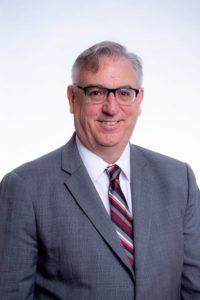Q&A with Robert Patzelt
Small to medium sized pension funds often face challenges with resources and access to opportunities. How should funds of this range approach vetting investment models? What are the key elements of a good governance model? Robert Patzelt, Chair of Investment Committee, Workers Compensation Board of Nova Scotia, answers questions from their decision on OCIO to fund governance.
Q: You are Chair of Investment Committee for Workers Compensation Board of Nova Scotia. As a fund of around $2 billion, how do you structure investment model in meeting fiduciary goals?
A: We have the same challenges as other funds. What has changed is that we moved to an OCIO model (outsourced chief investment officer). Investment structures have become more complex and specialized. By going to an OCIO we were able to move from 6 to 12 asset classes and as a result moved from having greater diversity with access from 8 to 31 managers.
Q: What factors should a fund of similar size take into account when selecting and vetting the investment model, whether to use a consultant, a fund extension, or have an internal team?
A: If you can do it better and/or cheaper then you should do something yourself. In Nova Scotia, even if we had the expertise one is limited in the ability to access global opportunities. The process of using and OCIO involves a good RFP and service contract with clear duties and expectations, due diligence in your selection process, etc. all of which are intended to result in you choosing a service model that meets the requirements of that fund and the organization.
Q: What are key components of governance for pension funds who are using OCIO model?
A: The governance principles don’t change but how you put them into effect. Since you are no longer involved in execution you have to ensure that you have oversight of the OCIO and you would consider things like: investment expertise, fund risk, influence and control over services including the OCIO’s 3rd party suppliers (e.g. data integrity, regulatory compliance, etc.). Our oversight is at the higher level and has 4 main tests: are contractual obligations met?; a qualitative review of service by staff; a qualitative review by the Investment Committee; and an external quantitative review by and independent party especially with regard to risk tolerance and performance.
Q: How did the fund respond to the market volatility early this year and what lessons, if any, did you take away from that?
A: The Fund responded very well. In many respects it followed the market but by being so diversified and designed to be a bit more defensive it responded as predicted. It mimicked past events like the GFC where the plan did not drop as much as key indexes and returned sooner. Market volatility still remains a concern as it does for all of us. 2020 will be a year to be remembered.
Q: What is the board’s role when fund administration and/or investment is delegated to a third-party advisor?
A: You have moved from tactical and operational activities to higher level matters such as: setting investment policy, choosing asset classes and allocation, selecting and managing the OCIO and setting guidelines.
Robert Patzelt, Chair of Investment Committee, Workers Compensation Board of Nova Scotia, spoke at Institutional Connect Virtual Forum in October 2020.

